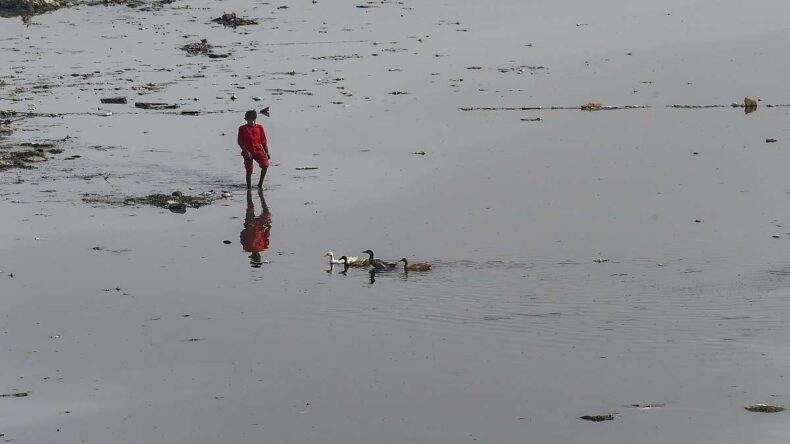The Central Water Commission (CWC) has issued a warning regarding the rising water level in the Yamuna River in Delhi. The water level is expected to breach the danger mark of 205.33 metres on Tuesday. Heavy rainfall in northwest India has contributed to this situation, increasing the risk of floods in low-lying areas.
CWC’s Warning and Water Level Updates:
The CWC has alerted authorities and residents about the impending danger as the Yamuna River’s water level continues to rise. According to the CWC’s flood-monitoring portal, the water level at the Old Railway Bridge reached 203.18 metres on Sunday, nearing the warning level of 204.5 metres. The CWC predicts that the water level may reach 205.5 metres between 11 am and 1 pm on Tuesday. These updates emphasise the urgency of preparedness and the need for appropriate measures to mitigate potential flood-related risks.
Heavy Rainfall in Northwest India:
Northwest India has experienced relentless rainfall over the past two days, affecting multiple states including Uttarakhand, Himachal Pradesh, Haryana, Uttar Pradesh, and Rajasthan. The India Meteorological Department (IMD) reported significant precipitation in these regions, with Delhi recording 153 mm of rainfall in 24 hours, the highest for July since 1982. Chandigarh and Ambala also witnessed record-breaking rainfall of 322.2 mm and 224.1 mm respectively. The cumulative effect of heavy to very heavy rainfall in these areas has contributed to the swelling of the Yamuna River and increased the likelihood of flood-related consequences.
Vulnerability of Low-Lying Areas in Delhi:
The low-lying areas near the Yamuna River in Delhi are particularly vulnerable to flooding. These areas are home to approximately 37,000 people who are at risk of displacement and property damage in the event of a flood. Due to the river’s catchment area covering parts of Uttar Pradesh, Uttarakhand, Himachal Pradesh, Haryana, Rajasthan, Madhya Pradesh, and Delhi, the impact of rising water levels can extend beyond the immediate vicinity.
What can be done?
Efforts should focus on preparedness and proactive measures to mitigate the risks associated with the rising water level. Establishing effective communication channels to provide timely information to residents is important for them to take necessary precautions. People in low-lying areas should monitor water levels and follow evacuation orders. Clear evacuation routes and prepared shelters are necessary to accommodate displaced individuals.
Implementing flood mitigation strategies is crucial, such as constructing embankments, improving drainage systems, and implementing flood control measures. Proper maintenance of existing infrastructure like dams and reservoirs is necessary for their functionality during floods.
Long-term measures should be considered alongside immediate response efforts. Comprehensive studies should assess flood-prone areas and develop sustainable solutions. Community awareness and education programs can enhance preparedness and response capabilities among residents.
The Central Water Commission and relevant agencies must monitor the situation closely and provide updates to the public. Cooperation and active participation from residents, authorities, and communities are vital for effective flood management, ensuring the safety of everyone involved.
Thus, the rising water level in the Yamuna River in Delhi is a serious concern due to the risk of floods. Heavy rainfall in northwest India and the approaching danger mark emphasise the need for authorities to remain vigilant and take proactive measures. Disaster management strategies, including early warning systems and prompt responses, can minimize the impact of flooding and protect affected communities. Ensuring the safety of residents, timely evacuation if necessary, and implementing flood mitigation strategies are crucial. Coordination between authorities, government agencies, local authorities, and communities is essential for successful evacuation plans and rescue operations.













